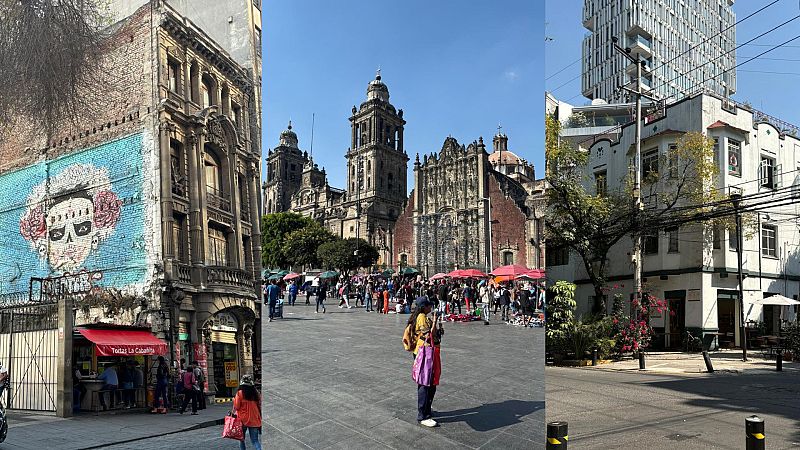Protests Against Gentrification and Tourism in Mexico City
Residents of Mexico City recently took to the streets in a significant protest, expressing their discontent with the rapid gentrification and the surge in mass tourism. Experts suggest that this unrest has been building up over years, driven by government policies and the active promotion of the city as an attractive destination for digital nomads. The tensions were further amplified when President Claudia Sheinbaum claimed that the protest was marked by xenophobia, reigniting discussions about the growing presence of Americans in the city.
Many locals feel they are being priced out of their neighborhoods, a situation partly attributed to a decision made by Sheinbaum during her tenure as mayor. In 2022, she signed an agreement with Airbnb and UNESCO aimed at boosting tourism and attracting digital nomads, despite concerns about the impact of short-term rentals on housing availability.
The protests featured hundreds of demonstrators marching through key tourist areas of Mexico City, carrying signs that read “Gringo: Stop stealing our home” and “Housing regulations now!” These demonstrations highlighted long-standing frustrations related to mass tourism and rising rent prices across large parts of the city.
The influx of foreigners began around 2020, with many Americans choosing to work remotely from Mexico City, escaping coronavirus restrictions and taking advantage of lower living costs. Over the years, neighborhoods such as Roma and Condesa have become increasingly populated by foreign tourists and remote workers, leading to a noticeable shift in the local landscape.
The Impact of Holiday Rentals on Housing Prices
Experts argue that the surge in gentrification is a result of both a shortage of affordable housing and longstanding government failures to regulate the housing market effectively. According to Antonio Azuela, a lawyer and sociologist, enforcement of these regulations has been lacking, allowing developers and companies like Airbnb to exploit the situation.
Inside Airbnb, an advocacy organization that tracks the company’s impact on residential communities, reports that more than 26,000 properties are currently listed on Airbnb in Mexico City. This number is higher than in New York City and Barcelona, where similar protests have also taken place. The result has been soaring rent and living costs, along with an increasing prevalence of English on the streets of certain areas. Some groups have described this phenomenon as a form of “neo-colonialism.”
Being a Responsible Tourist in Mexico City
Travelers should still feel welcome in Mexico City, provided they visit in a way that supports the local community. Staying for longer periods rather than hopping from place to place can be more sustainable, allowing visitors to explore diverse areas of the city rather than just the popular attractions.
Mexico City is home to over 150 museums, offering a wealth of cultural experiences beyond the most famous ones. For instance, after visiting the National Museum of Anthropology, travelers can explore the Museo de Sitio Xólotl, which provides access to ruins at Tenayuca, featuring pyramids dating back to the 1200s. Animal lovers can enjoy the National Biodiversity Pavilion, which showcases Mexico’s natural biodiversity, while art enthusiasts can visit the Olivia Foundation, focusing on Postwar Abstraction by female painters.
Best Neighborhoods to Stay in Mexico City
When choosing accommodation, it is advisable to opt for small, family-run hotels and guest houses rather than large chains or all-inclusive resorts. These options often provide a more authentic experience and support the local economy.
The local tourist board recommends several walking-friendly neighborhoods that make for great bases, avoiding the historic center and tourist-heavy areas like Roma and Condesa. San Rafael offers a laid-back sophistication and a dynamic art scene, while San Ángel, once a town of gardens and orchards, features decadent villas and floral masterpieces. Coyoacán, known for the Frida Kahlo Museum, also offers quieter streets and markets, with day trippers usually leaving in the evening. Xochimilco, similar to Coyoacán, presents a unique blend of canals, bridges, and cafes, along with an outdoor gallery of street art.







